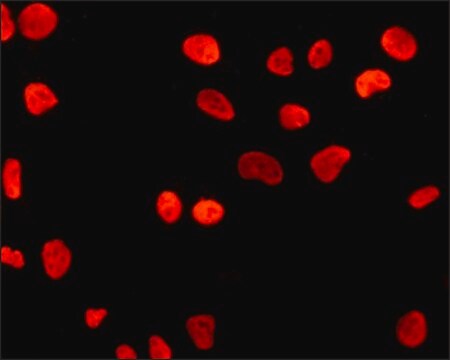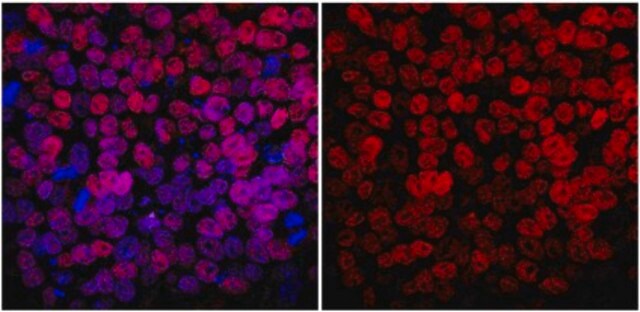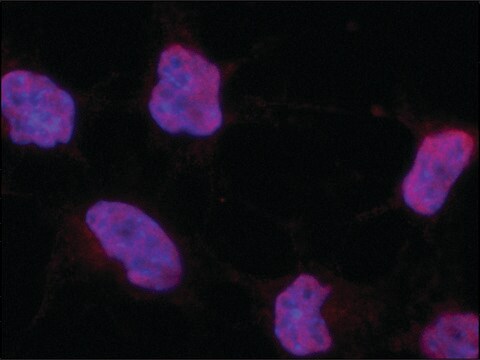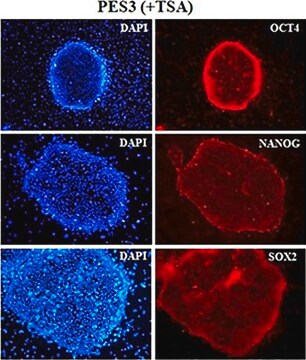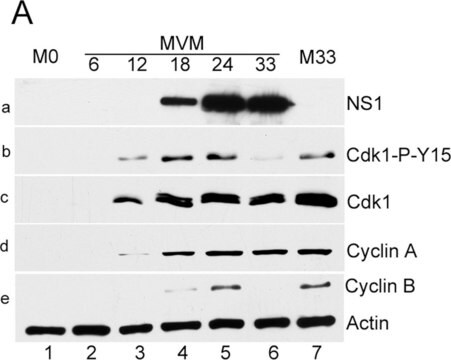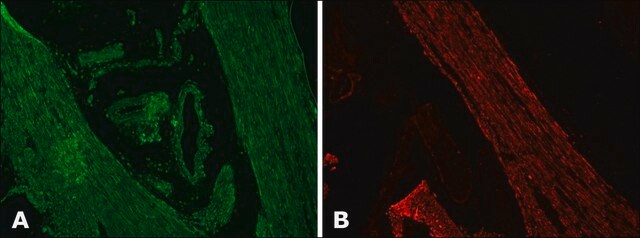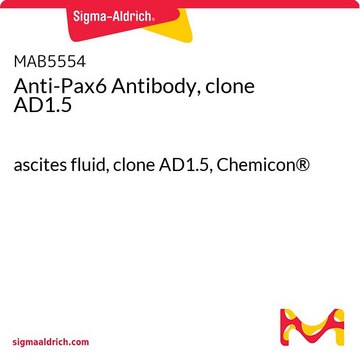MAB4419
Anti-OCT-4 [POU5F1] Antibody, clone 7F9.2
clone 7F9.2, from mouse
Synonim(y):
Octamer-binding transcription factor 3, POU class 5 homeobox 1, POU domain class 5, transcription factor 1, POU-type homeodomain-containing DNA-binding protein, octamer-binding transcription factor-3
About This Item
Polecane produkty
pochodzenie biologiczne
mouse
Poziom jakości
forma przeciwciała
purified immunoglobulin
rodzaj przeciwciała
primary antibodies
klon
7F9.2, monoclonal
reaktywność gatunkowa
human, mouse
metody
flow cytometry: suitable
immunocytochemistry: suitable
western blot: suitable
moc wejściowa
sample type: human embryonic stem cell(s)
sample type induced pluripotent stem cell(s)
sample type: mouse embryonic stem cell(s)
izotyp
IgG1κ
numer dostępu NCBI
numer dostępu UniProt
Warunki transportu
wet ice
docelowa modyfikacja potranslacyjna
unmodified
informacje o genach
human ... POU5F1(5460)
mouse ... Pou5F1(18999)
Powiązane kategorie
Opis ogólny
Specyficzność
Immunogen
Zastosowanie
Stem Cell Research
Pluripotent & Early Differentiation
Flow Cytometry: Recommended working dilution is 2 µg/mL.
Immunocytochemistry: Recommended working dilution is 1:100 – 1: 200.
Opis wartości docelowych
Powiązanie
Postać fizyczna
Przechowywanie i stabilność
Inne uwagi
Oświadczenie o zrzeczeniu się odpowiedzialności
Nie możesz znaleźć właściwego produktu?
Wypróbuj nasz Narzędzie selektora produktów.
Kod klasy składowania
12 - Non Combustible Liquids
Klasa zagrożenia wodnego (WGK)
WGK 1
Temperatura zapłonu (°F)
Not applicable
Temperatura zapłonu (°C)
Not applicable
Certyfikaty analizy (CoA)
Poszukaj Certyfikaty analizy (CoA), wpisując numer partii/serii produktów. Numery serii i partii można znaleźć na etykiecie produktu po słowach „seria” lub „partia”.
Masz już ten produkt?
Dokumenty związane z niedawno zakupionymi produktami zostały zamieszczone w Bibliotece dokumentów.
Produkty
Skip weekend feedings. Defined serum-free and feeder-free expansion media for human pluripotent stem cells (ES and iPS cells). See publications and protocols.
The Simplicon™ RNA Reprogramming Technology is a next generation reprogramming system that uses a single synthetic, polycistronic self-replicating RNA strand engineered to mimic cellular RNA to generate human iPS cells.
Human iPSC neural differentiation media and protocols used to generate neural stem cells, neurons and glial cell types.
Podłoża do różnicowania neuronalnego ludzkich iPSC i protokoły stosowane do generowania neuronalnych komórek macierzystych, neuronów i komórek glejowych.
Nasz zespół naukowców ma doświadczenie we wszystkich obszarach badań, w tym w naukach przyrodniczych, materiałoznawstwie, syntezie chemicznej, chromatografii, analityce i wielu innych dziedzinach.
Skontaktuj się z zespołem ds. pomocy technicznej![Przeciwciało anty-OCT-4 [POU5F1], klon 7F9.2, koniugat Alexa Fluor™ 488 clone 7F9.2, from mouse, ALEXA FLUOR™ 488](/deepweb/assets/sigmaaldrich/product/images/405/633/324511fc-ecc5-4c49-9d9d-8cf25ab28d40/640/324511fc-ecc5-4c49-9d9d-8cf25ab28d40.jpg)
